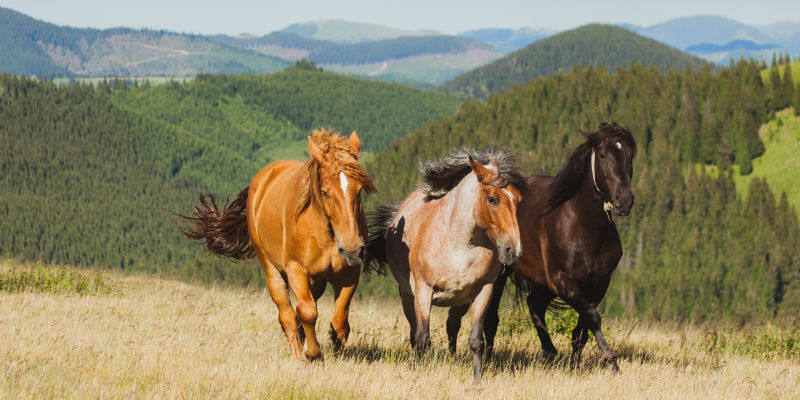State Horses
It is no secret that the states in America have different state symbols. Apart from having specific state flags, there are also state seals, flowers, trees. A few states even have a state coat of arms. Some have state animals—birds, butterflies, insects, and fish. And yes, some states have state horses; twelve states to be exact.
The first state horse was designated in the state of Vermont in 1961. The most recent induction of a state horse occurred in 2010 when both North Carolina and South Carolina declared state horse breeds. Aside from the twelve states that have picked their state horse, Oregon and Arizona have both had proposals to induct this new type of state symbol but have neither chosen which breed to represent them yet. The state horse of North Dakota is the “honorary state equine.”
The Alabama state horse breed in the Racking Horse, which is well known in the southern United States for its ambling gait. Florida recently designated the Florida Cracker Horse as its state horse in 2008. The Florida Cracker Horse was first brought to what is now Florida in the 1500s by Spanish explorers, and it played a large part in the development of the state’s cattle and general agriculture industries. For more state horses and horse facts, check out our new Colorado Horse Information page.
No Colorado State Horse
Though Colorado is a big horse state with a lot of beautiful horse property for sale, it has yet to have named a state horse. What horse breed do you think should be Colorado’s state horse? Weighing in on the subject, Colorado Horse Property suggests The Colorado Ranger. The Colorado ranger horse (or ranger bred horses) is a breed of horse that comes from the High Plains region of Colorado. The Colorado Ranger Horse was started by Mike Ruby. Ruby is a Canada-born horseman, specifically from Ontario. Check out our blog to find out more information on The Colorado Ranger Horse.
Photo by Florin-Alin Beudean on Unsplash



